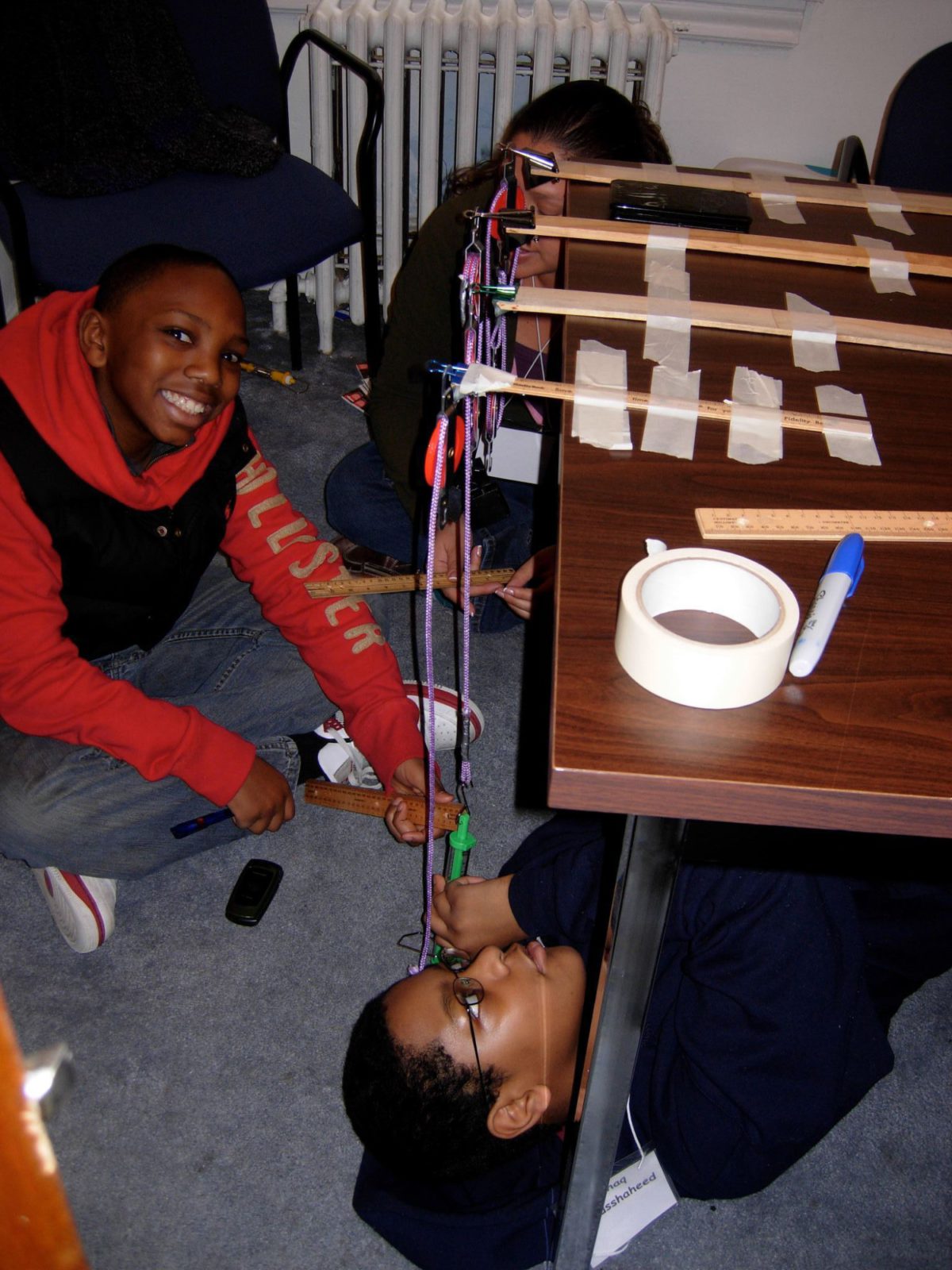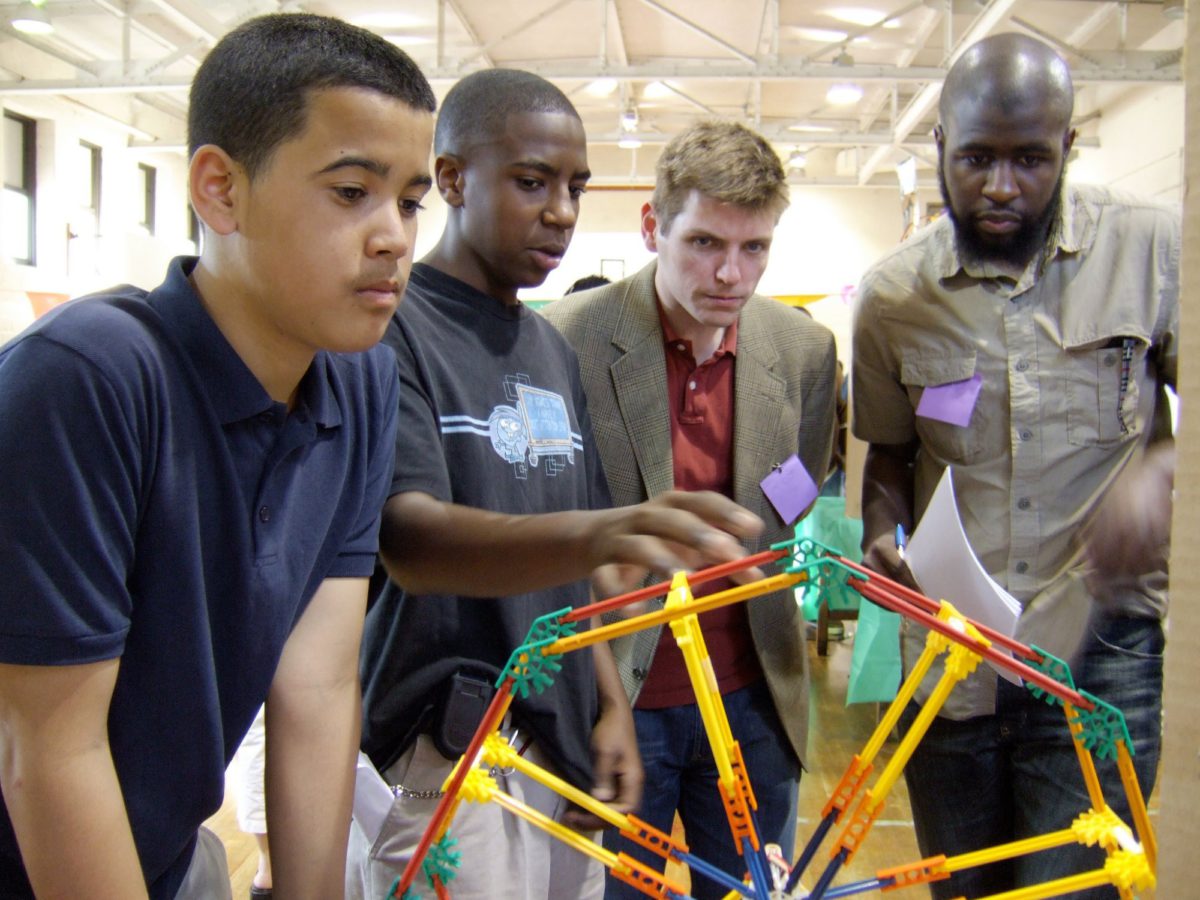Caleph Wilson • May 16, 2013
Connecting scientist mentors with students who have the desire to learn
Every scientist has three key experiences that helped them on the road to a career in science, technology, engineering and mathematics, or STEM: 1) being born with a desire to learn; 2) having opportunity to apply STEM principles; and 3) guidance from an effective mentor. The desire to learn started early in our lives, and those of us who were lucky began to receive guidance while we were in school. As we navigated the various stages of our careers, all three experiences built upon each other. We scientists know the value of mentoring and providing opportunities to others. However, without a road map to community engagement, finding out how to give back to the community can be difficult.
Here is the good news: the skills that make us scientists transfer to working with students in the community! For example: whenever we want to solve an issue with a research project that is outside of our skill set, we simply locate a collaborator who has resources or a skill to meet that need. Scientists can take that same approach to engage the community. So, think about your approach to outreach like you approach a research project.
As always, projects start with questions. Let’s start with these in our quest to help students begin to learn about STEM:
Opportunities to address the above questions arise constantly, and scientists have to be prepared to take advantage of them. For example, there are two well-established STEM outreach programs in my community. One is the Science Education Academy, which is a collaboration between Whiterock Baptist Church and the Ernest Everett Just Biomedical Society of the University of Pennsylvania. The other is iPRAXIS, which is a community-based organization that supports a city-wide science fair. For the last few years the members of the Community Service Committee of the Biomedical Postdoctoral Council at the University of Pennsylvania have served as science project mentors for middle school students in Philadelphia.
Science Education Academy matches graduate students and postdoc volunteers with elementary school students to introduce them to or reinforce STEM principles over the course of seven weeks. The main benefit of the program is that students from under-represented minority groups have access to scientists at a leading research institution. Moreover, a majority of the science mentors are from under-represented minority groups as well, providing needed role models. At the end of the mentoring cycle participants have a field exercise at Clark Park. Students have an opportunity to apply many of the principles learned in the classroom by exploring the park's environments. Over time, Science Education Academy has built a very strong relationship with students, parents, scientists and a faith-based organization.

The community organization iPRAXIS prepares students for science fair projects. Postdoctoral scientific volunteers, or “Scienteers,” visit science classes of area middle schools and mentor young people with developing science projects. Students are introduced to the standards of the scientific process, including background research, experimental design, the scientific method, notebook maintenance, and project execution. In addition to helping with science fair projects, Scienteers and other scientists serve as judges at the city-wide science fair. Each May iPRAXIS hosts an iFUNCTION, which is an awards program meant to recognize the students’ efforts and achievements.

Programs like Science Education Academy and iPRAXIS are established avenues that facilitate connections between scientists and the community, but community service can also be achieved within smaller groups or on an individual level. To pursue this, take a few minutes to draft an e-mail to the principal and science teachers of your local elementary or middle schools. Ask if there are regular tutoring opportunities or other needs for their science classes. In many cases, schools may need assistance setting up science classroom or labs. Determining what is needed is the best way to identify what a scientist can do to help.
After the initial written communication, be sure to follow up with a visit to the school. Ask to tour the science facilities. After returning to work, scientists can determine what knowledge and materials will be helpful to area schools and communities. Surplus lab equipment, computers, software or office supplies can be donated to support STEM activities.
There are many ways to get involved -- just taking the first step of reaching out will often lead to a very good and lasting relationship between scientists and the community. Both sides have a desire to establish solid relationships to help students develop their interest in STEM!
The Time is Now.
As a Planetary Defender, you’re part of our mission to decrease the risk of Earth being hit by an asteroid or comet.
Donate Today

 Explore Worlds
Explore Worlds Find Life
Find Life Defend Earth
Defend Earth

